Ignalina Nuclear Power Plant (INPP) is nestled in the northeastern tip of Lithuania, close to both the Belarus and Latvian borders. Dating back to the time of the Soviet Union, it was closed down in 2009, a stipulation imposed on Lithuania as part of their agreement to join the EU – the plant was cited as high risk due to the similarities in design with Chernobyl, some 650km to the south. The site which, at its most productive, was one of the world’s most powerful reactors, is slowly being decommissioned but the costs involved are immense. As of 2014, the EU had already allocated a contribution of €1.5 billion towards the project and the final estimate to come out of their purse is expected to be in the region of €3 billion. For the same period, Lithuania had allocated €50 million up until 2014 and is expected to have a final spend of around €320 million (*). I can’t find any reference to Russia contributing to the decommissioning of Ignalina.
(*) Source Ignalina Nuclear Power Plant website.
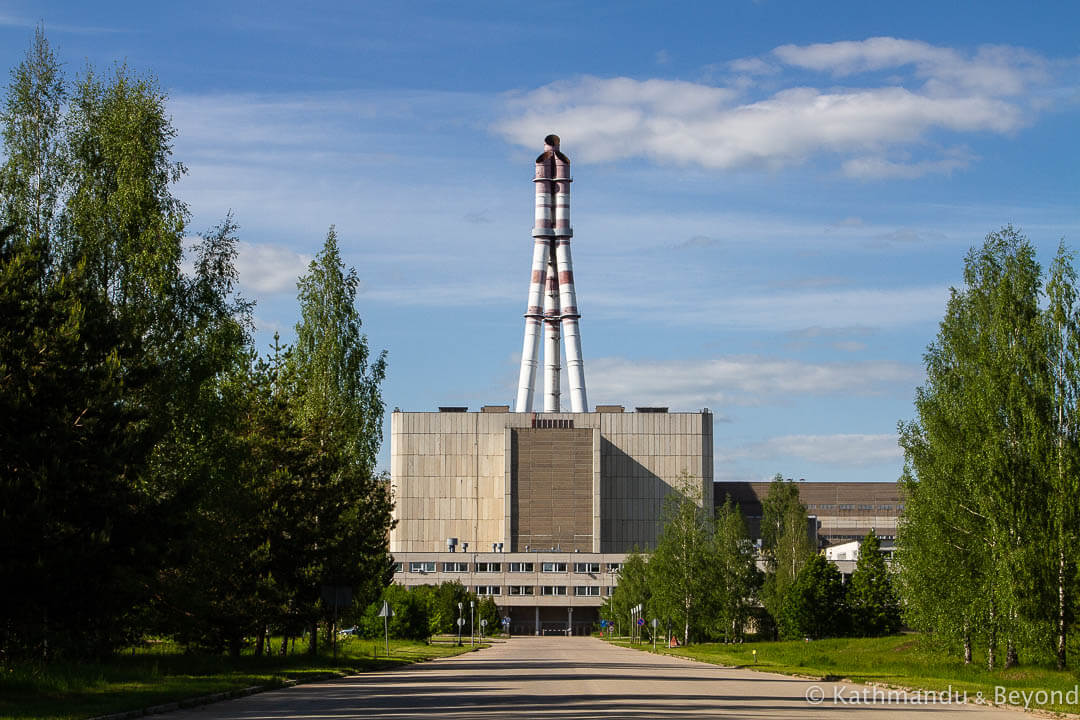 Ignalina Nuclear Power Plant
Ignalina Nuclear Power Plant
Ignalina Nuclear Power Plant is often associated with the Chernobyl Nuclear Disaster and, interestingly, HBO’s highly rated mini-series, Chernobyl, was filmed in Lithuania and some of the scenes were shot at Ignalina Power Plant because of its close resemblance to the one at Chernobyl.
I appreciate the EU has inherited this reactor and there is certainly no way Lithuania can bear the brunt of this financial burden on its own (and why should it – hello Russia!) but, by anyone’s standards, this is an obscene amount of money and, what’s more, the dismantling of the plant isn’t going according to plan. Personally, I was anti Brexit but I can see why those who actually knew what they were talking about (as opposed to the masses who predominantly wanted out based on immigration concerns) voted to leave when you see figures like this being bandied around. There is even talk of constructing a new nuclear power station on the same site but, for the time being, INPP remains in a state of limbo.
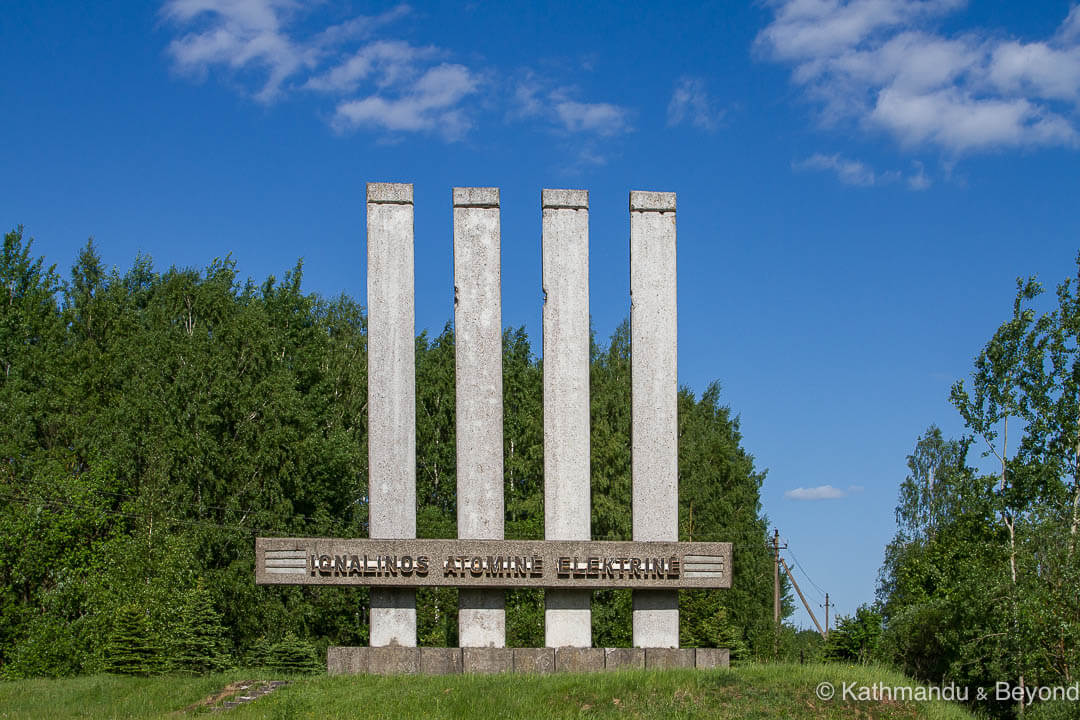 Welcome sign on the road to Ignalina Nuclear Power Plant
Welcome sign on the road to Ignalina Nuclear Power Plant
For €57.92 (a strange figure!) per person, it is possible to do a 2½ hour tour of, what has been dubbed, the other Chernobyl but only on weekdays and subject to advance booking. There is also a Visitors’ Centre on site which, again, is only open on weekdays from 8am to 4pm. This is free but you need to call ahead and let them know you are coming. Frustratingly, we didn’t plan our visit so well and ended up being there on a Sunday and so didn’t get the chance to visit either of the above. We were still able to drive right up to the main entrance and take some photos of the exterior, but taking the tour would have far more worthwhile and we were gutted to have missed out.
If you are better organised than us and want to visit either the plant or the Visitors’ Centre (or both), all the information needed can be found on this website.
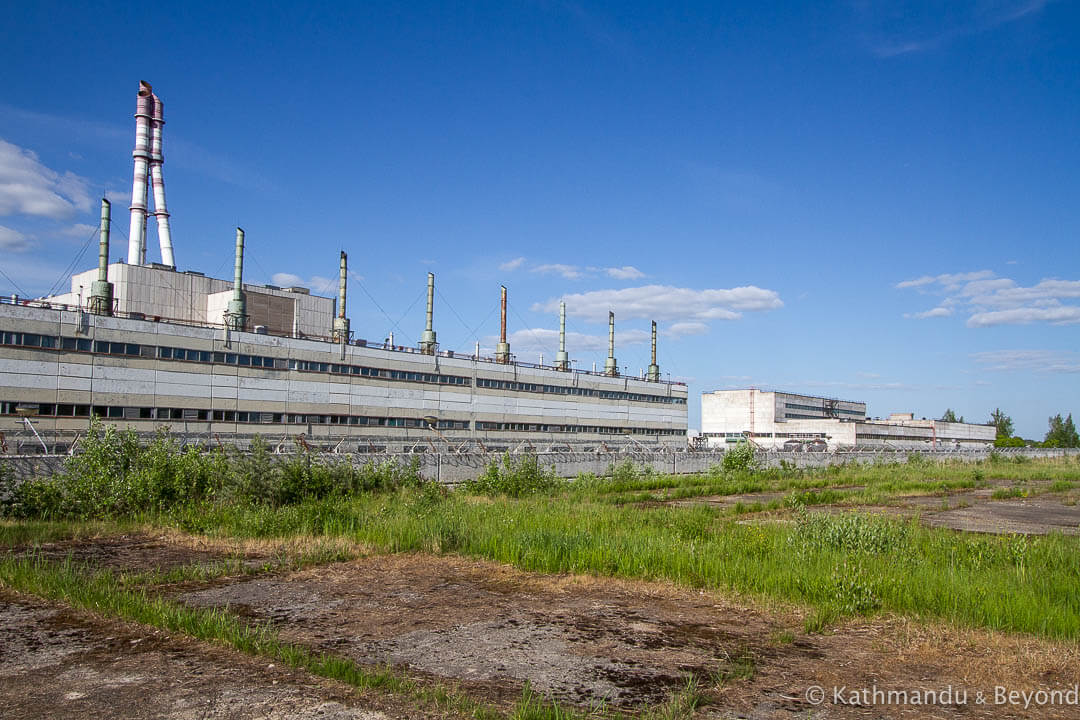
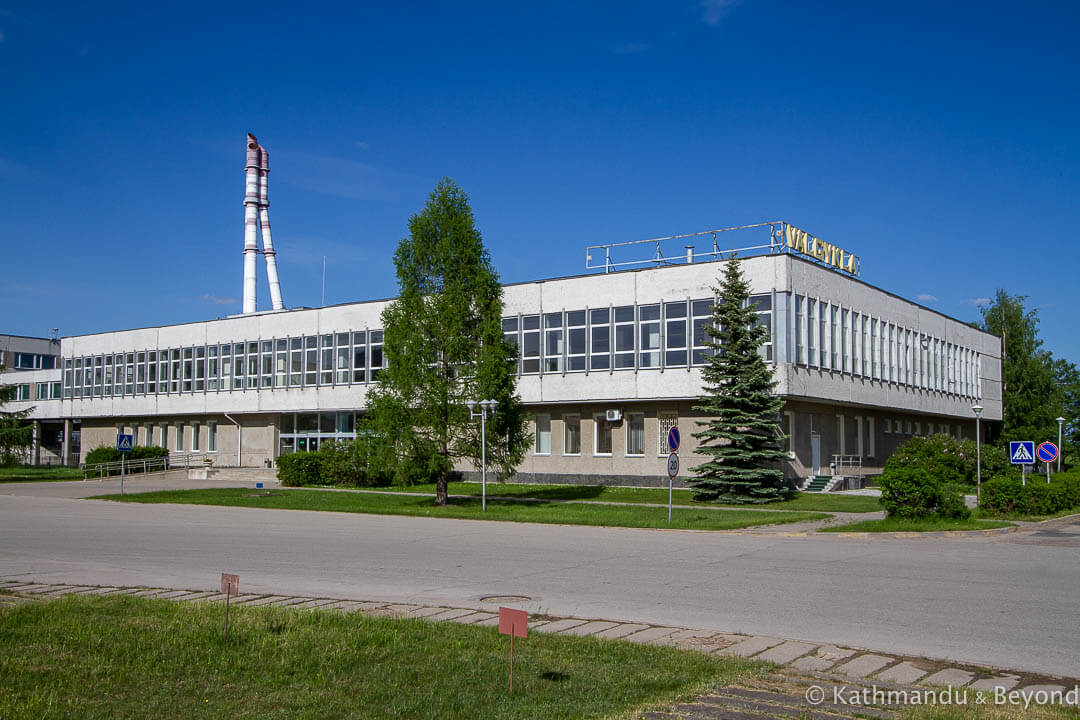
Ignalina Nuclear Power Plant
Beginning life as a series of small villages, the nearby settlement of Visaginas was re-developed in 1975 to house those who worked on the construction of INPP. It is Lithuania’s youngest town and during Soviet times, it was known as Sniečkus, after Antanas Sniečkus, who served as the First Secretary of the Lithuanian Communist Party from 1940 to 1974. Visaginas was the name of one of the villages bulldozed in order to make way for the new urban development and I’m guessing the town re-inherited the name sometime after the breakup of the USSR, although I can’t find an exact date to corroborate this assumption.
Eventually, the plant’s employees and their families moved in. Many came from Russia and the language on the streets was Russian, which it still is today for the majority. At its height more than 13,000 people worked at the power station but, these days, what with it being slowly closed down, the population of Visaginas is on the decline as the younger generation move away in search of employment opportunities elsewhere (*).
(*) There are still approximately 2,000 employees at the plant and their jobs include dismantling, maintenance and keeping on top of health and safety.
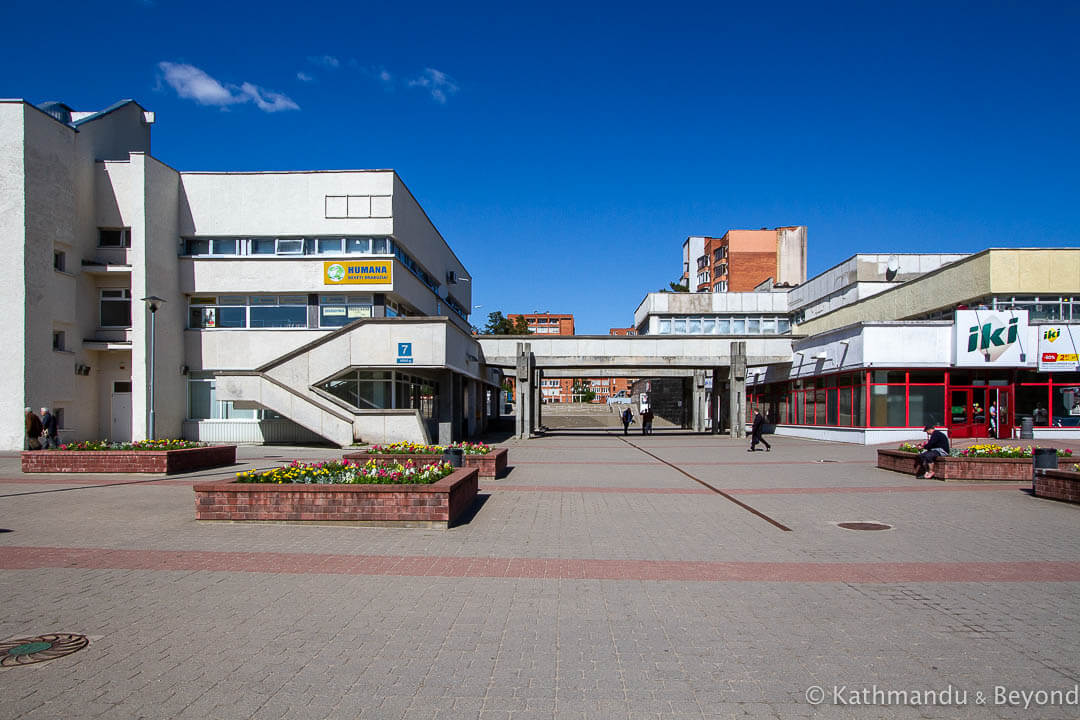 The town centre of Visaginas
The town centre of Visaginas
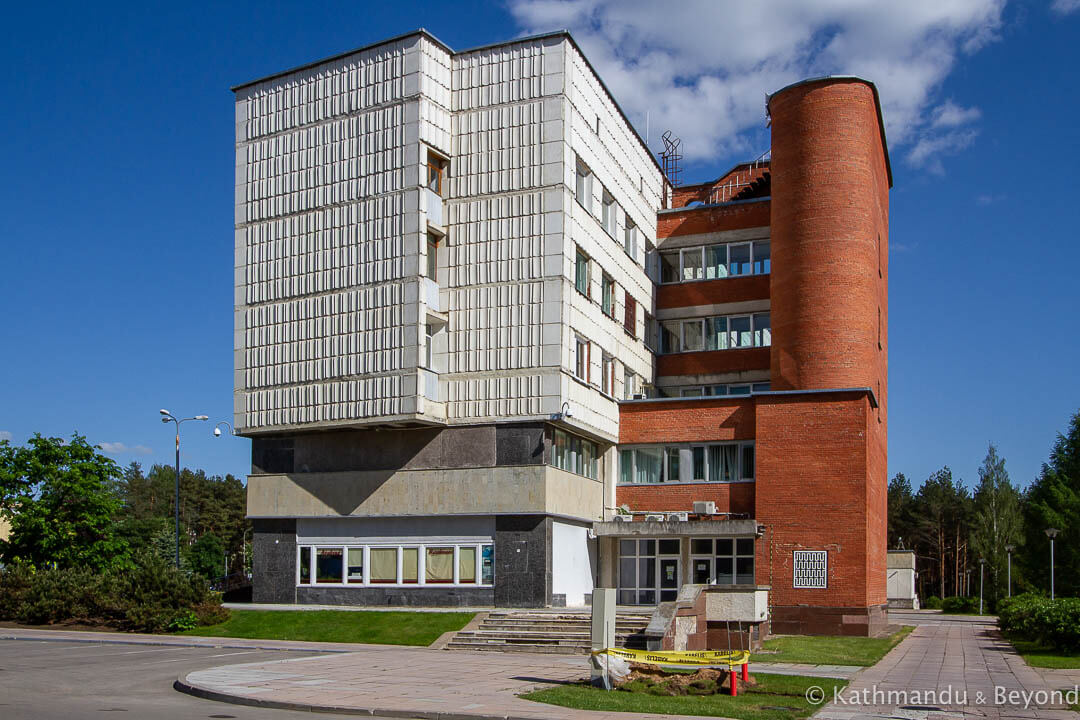
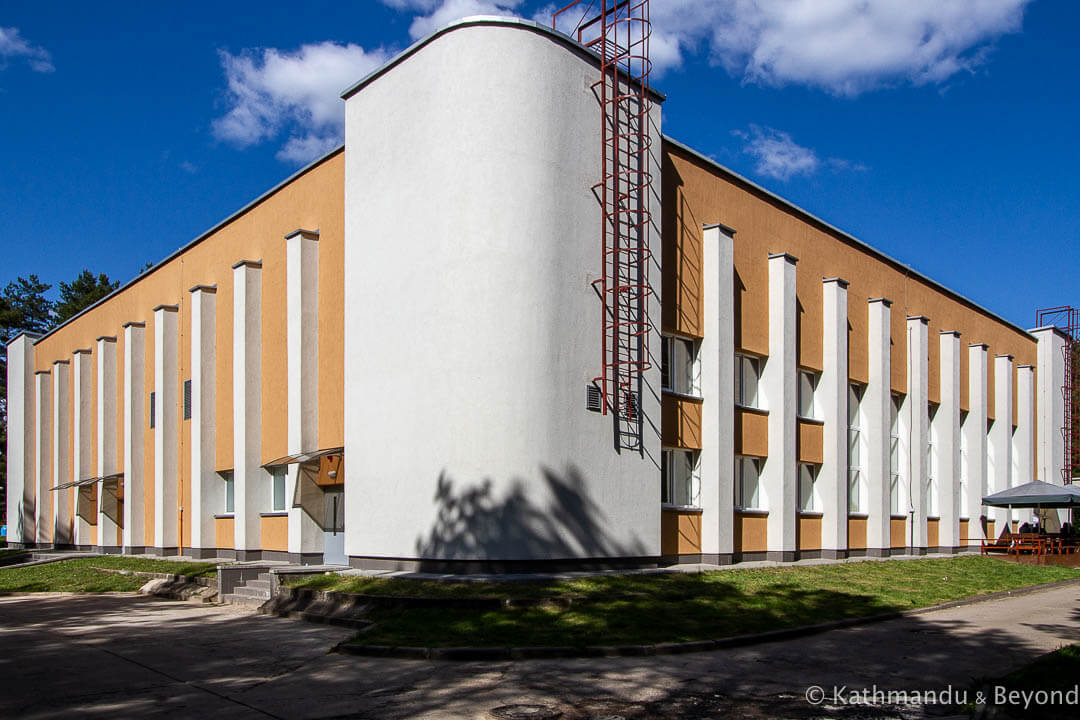
Above left: The Government Municipality of Visaginas and above right: the Culture Centre of Visaginas
It isn’t all doom and gloom, however. The city is situated on the edge of Lake Visaginas and is surrounded by pine forest and efforts are being made to develop the area for tourism. We’ve been to purpose-built cities in the former USSR before, including Slavutych, which was created to house those who were evacuated after the Chernobyl disaster in 1986 and, although we always find them interesting, we actually rather liked Visaginas and could have spent more time there if our schedule had permitted.
It helped that the sun was shining when we were there but also the forested location, the picturesque lake, and all-round good atmosphere added to our appreciation for the place. This was a bonus, though. We had driven halfway across Lithuania to see Soviet-era architecture and we weren’t disappointed.
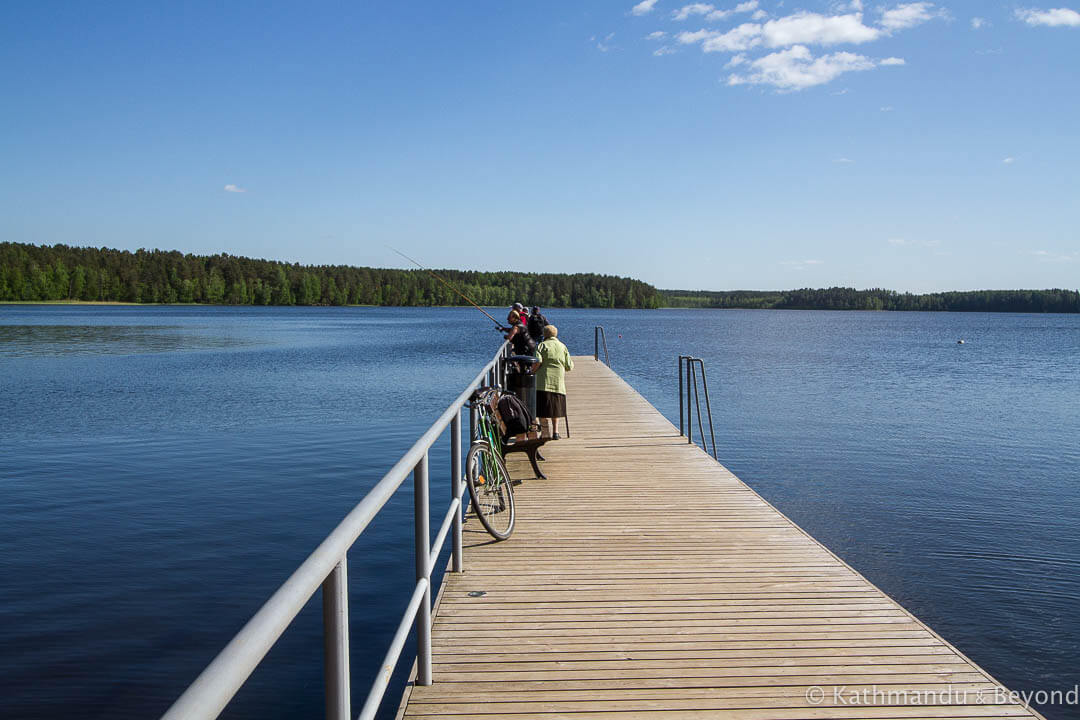 Lake Visaginas
Lake Visaginas
When it was initially created, Visaginas comprised of three micro-districts built around a central main square that would have been typical of the period in the Soviet Union. From an aerial perspective, the original design template for Visaginas was supposed to resemble a butterfly but, when work on the power plant was halted, the same happened with the development of the city and, viewed from above nowadays, the butterfly only has the one wing.
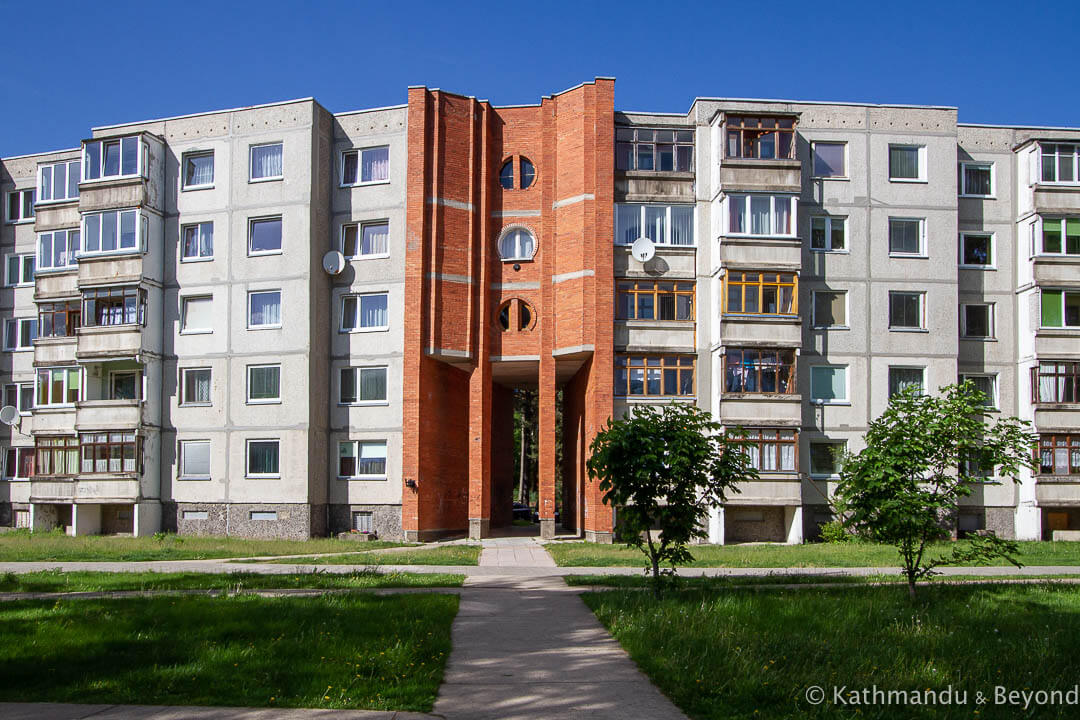
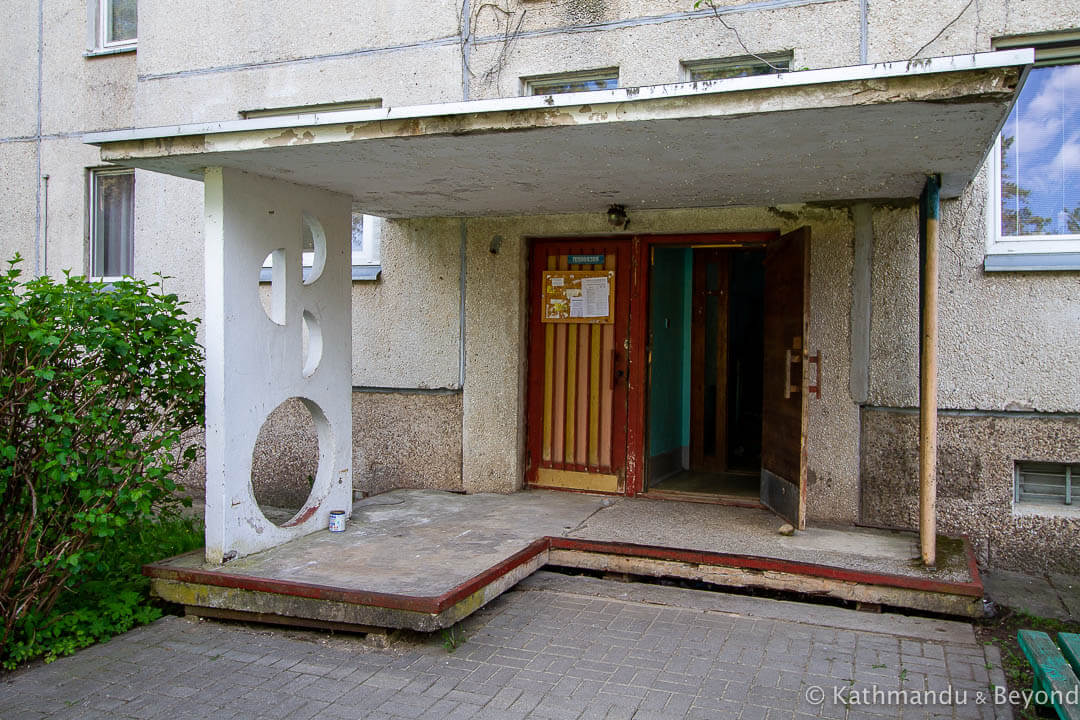
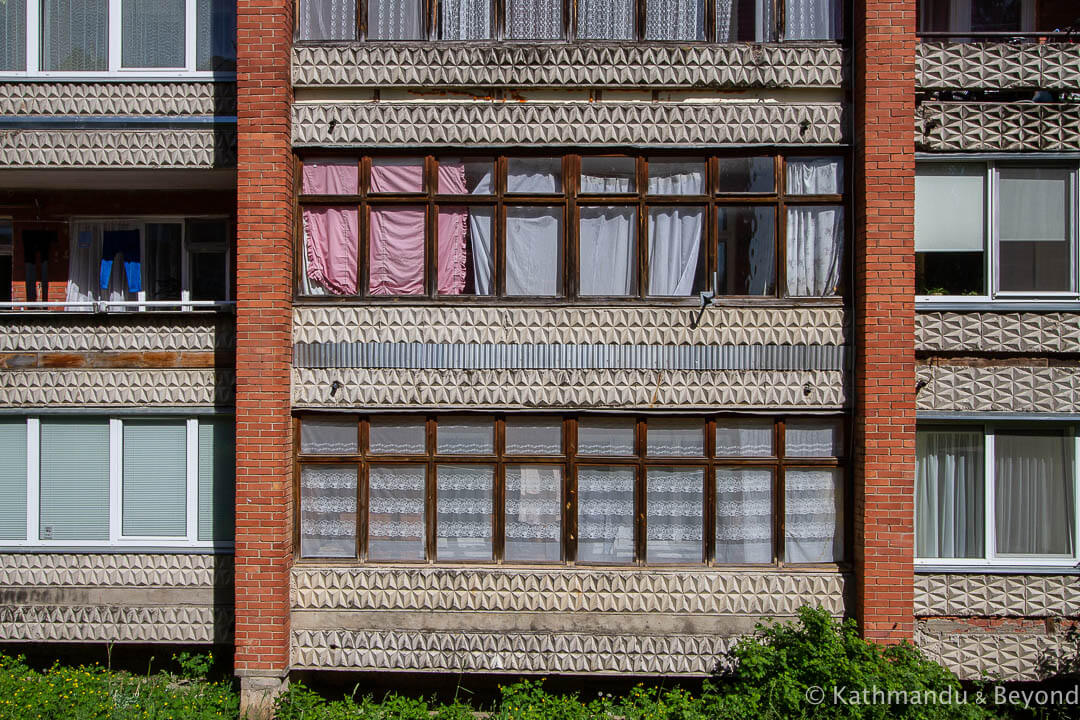
Above: Residental units in Visaginas
The most distinctive landmark in Visaginas is a crane, a symbol of caution and vigilance, atop a former Geiger counter, that is now a clock tower. Whether it was erected before or after the disaster at Chernobyl is not something I can answer but it’s a poignant reminder of how shatterable such places can be.
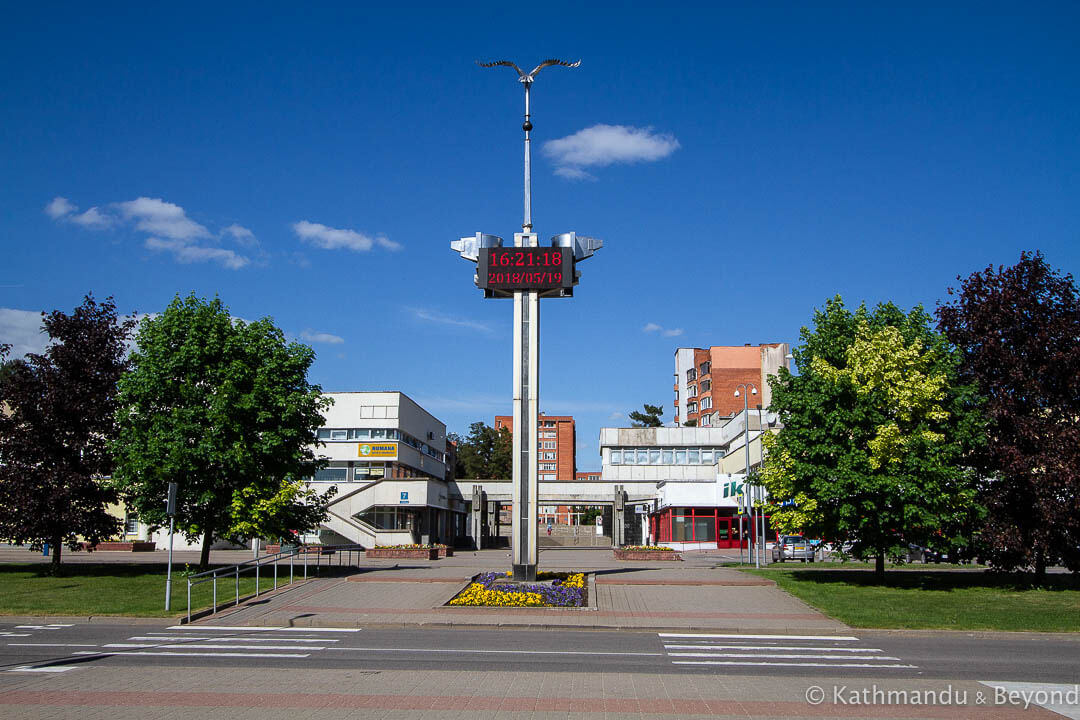 The former Geiger counter/clock tower in Visaginas
The former Geiger counter/clock tower in Visaginas
Is Ignalina Nuclear Power Plant and Visaginas worth visiting?
That depends on your interests and how much time you have. We have a fascination with Soviet history and also admire the style of architecture so, for us, the visit was totally worthwhile. What’s more, we were en route to Daugavpils, Latvia’s second city, and the detour didn’t add too much mileage.
Without question, our experience would have been enhanced had we taken a tour of the power station or, at the very least, visited the Visitors’ Centre so if you do go, keep this in mind and try to plan accordingly.
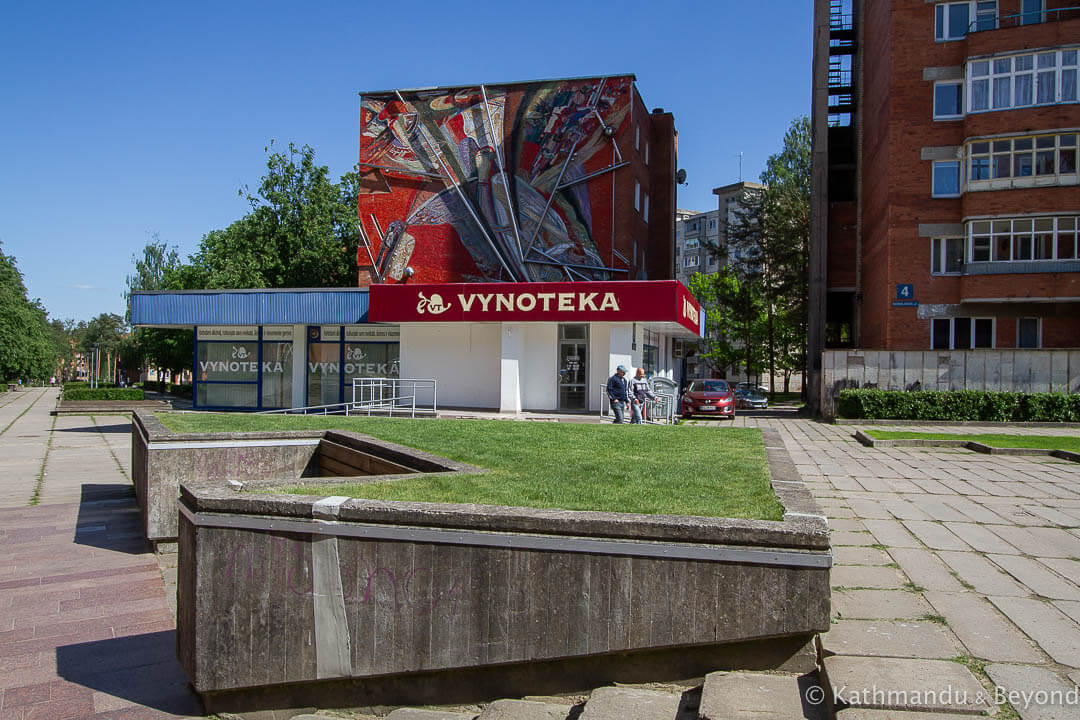 The mosaic is entitled “Man and Elements” and represents the idea that people and the elements should coexist with one another. The work was created by Viktor Tatarenko, a Soviet-born contemporary artist known for his monumental artwork which included several other mosaics as well as panels and stained glass
The mosaic is entitled “Man and Elements” and represents the idea that people and the elements should coexist with one another. The work was created by Viktor Tatarenko, a Soviet-born contemporary artist known for his monumental artwork which included several other mosaics as well as panels and stained glass
How to get to Ignalina Nuclear Power Plant and Visaginas
We went to both places as part of our road trip around the Baltic States but Visaginas can be reached by either train or bus from Vilnius. Both modes of transport take in the region of 2½ hours in each direction.
With regards to getting to and from INPP, I checked with the Visitors’ Centre and they informed that, although there are public buses running back and forth to the plant, these are for shift workers only. So the only option, if you don’t have your own transport, is to take a taxi (three numbers given to me are (8-386) 70007, (8 386) 70000 and (8 650) 20309) or try your luck at hitching. INPP is 11km/15-minute drive east of Visaginas.
There are places to stay in Visaginas, although the Soviet-era Hotel Aukštaitija mentioned in Lonely Planet’s guide to Estonia, Latvia and Lithuania has recently been knocked down and no longer exists, which is a shame as, in our opinion, a good old-fashioned Soviet hotel only enhances the experience in places like Visaginas!
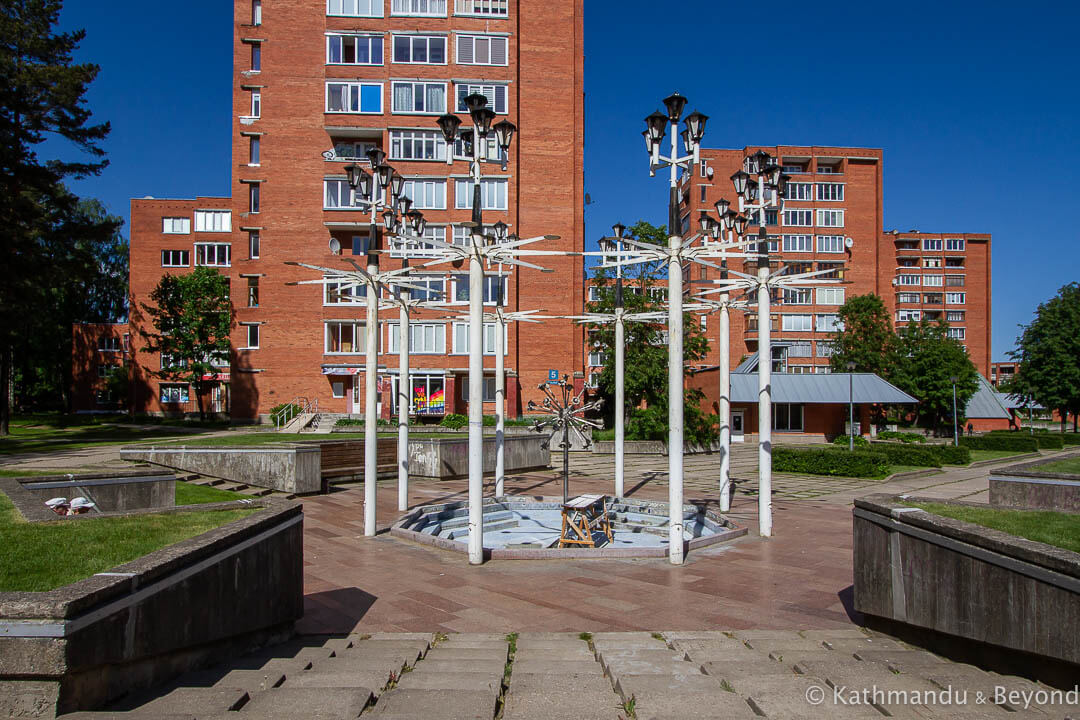 The no-longer-functioning “Sun” Fountain in the town centre of Visaginas
The no-longer-functioning “Sun” Fountain in the town centre of Visaginas
